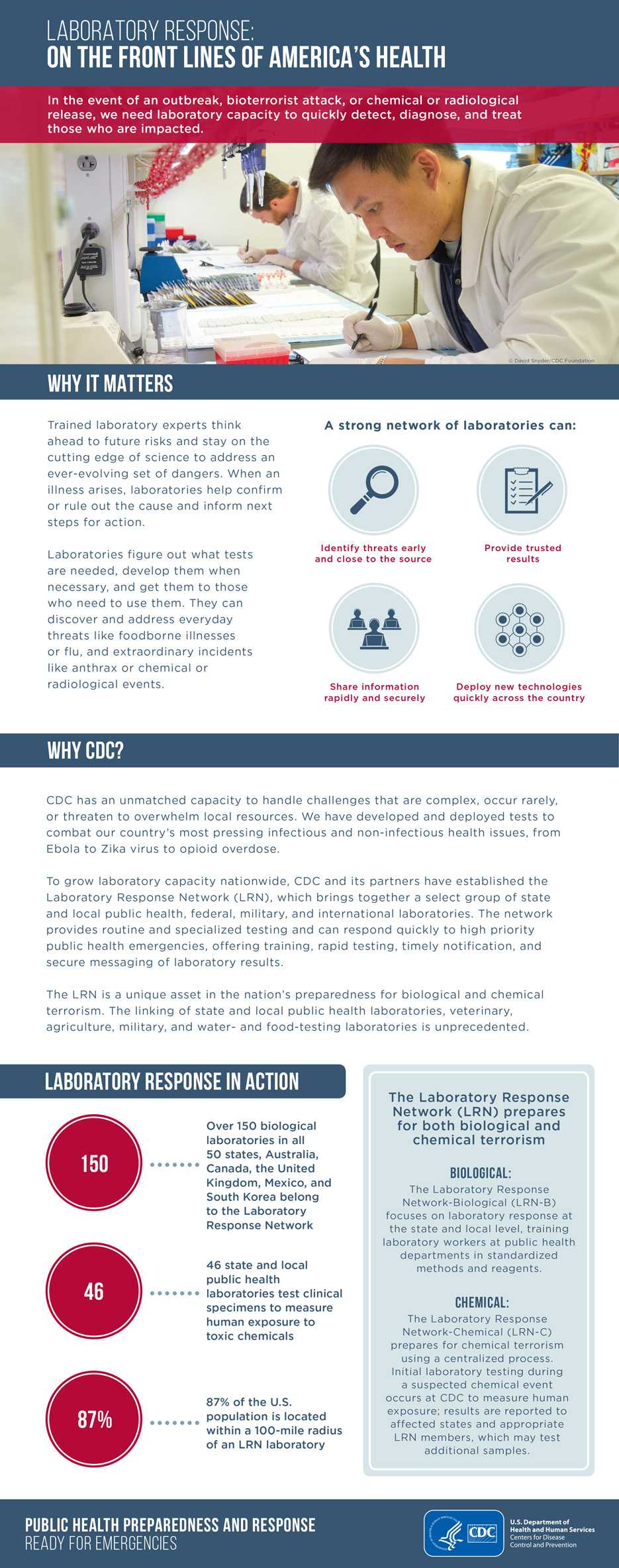Laboratory Response: On The Front Lines of America’s Health
Text Equivalent
Laboratory Response: On the Front Lines of America’s Health
In the event of an outbreak, bioterrorist attack, or chemical or radiological release, we need laboratory capacity to quickly detect, diagnose, and treat those who are impacted.
Why It Matters
Trained laboratory experts think ahead to future risks and stay on the cutting edge of science to address an ever-evolving set of dangers. When an illness arises, laboratories help confirm or rule out the cause and inform next steps for action.
Laboratories figure out what tests are needed, develop them when necessary, and get them to those who need to use them. They can discover and address everyday threats like foodborne illnesses or flu, and extraordinary incidents like anthrax or chemical or radiological events.
A strong network of laboratories can:
- Identify threats early and close to the source
- Provide trusted results
- Share information rapidly and securely
- Deploy new technologies quickly across the country
Why CDC?
CDC has an unmatched capacity to handle challenges that are complex, occur rarely, or threaten to overwhelm local resources. We have developed and deployed tests to combat our country’s most pressing infectious and non-infectious health issues, from Ebola to Zika virus to opioid overdose.
To grow laboratory capacity nationwide, CDC and its partners have established the Laboratory Response Network (LRN), which brings together a select group of state and local public health, federal, military, and international laboratories. The network provides routine and specialized testing and can respond quickly to high priority public health emergencies, offering training, rapid testing, timely notification, and secure messaging of laboratory results.
The LRN is a unique asset in the nation’s preparedness for biological and chemical terrorism. The linking of state and local public health laboratories, veterinary, agriculture, military, and water- and food-testing laboratories is unprecedented.
Laboratory Response in Action
- Over 150 biological laboratories in all 50 states, Australia, Canada, the United Kingdom, Mexico, and South Korea belong to the Laboratory Response Network
- 46 state and local public health laboratories test clinical specimens to measure human exposure to toxic chemicals
- 87% of the U.S. population is located within a 100-mile radius of an LRN laboratory
The Laboratory Response Network (LRN) Prepares for Both Biological and Chemical Terrorism
- Biological:The Laboratory Response Network-Biological (LRN-B) focuses on laboratory response at the state and local level, training laboratory workers at public health departments in standardized methods and reagents.
- Chemical: The Laboratory Response Network-Chemical (LRN-C) prepares for chemical terrorism using a centralized process. Initial laboratory testing during a suspected chemical event occurs at CDC to measure human exposure; results are reported to affected states and appropriate LRN members, which may test additional samples.
- Page last reviewed: February 6, 2017
- Page last updated: February 6, 2017
- Content source:


 ShareCompartir
ShareCompartir
